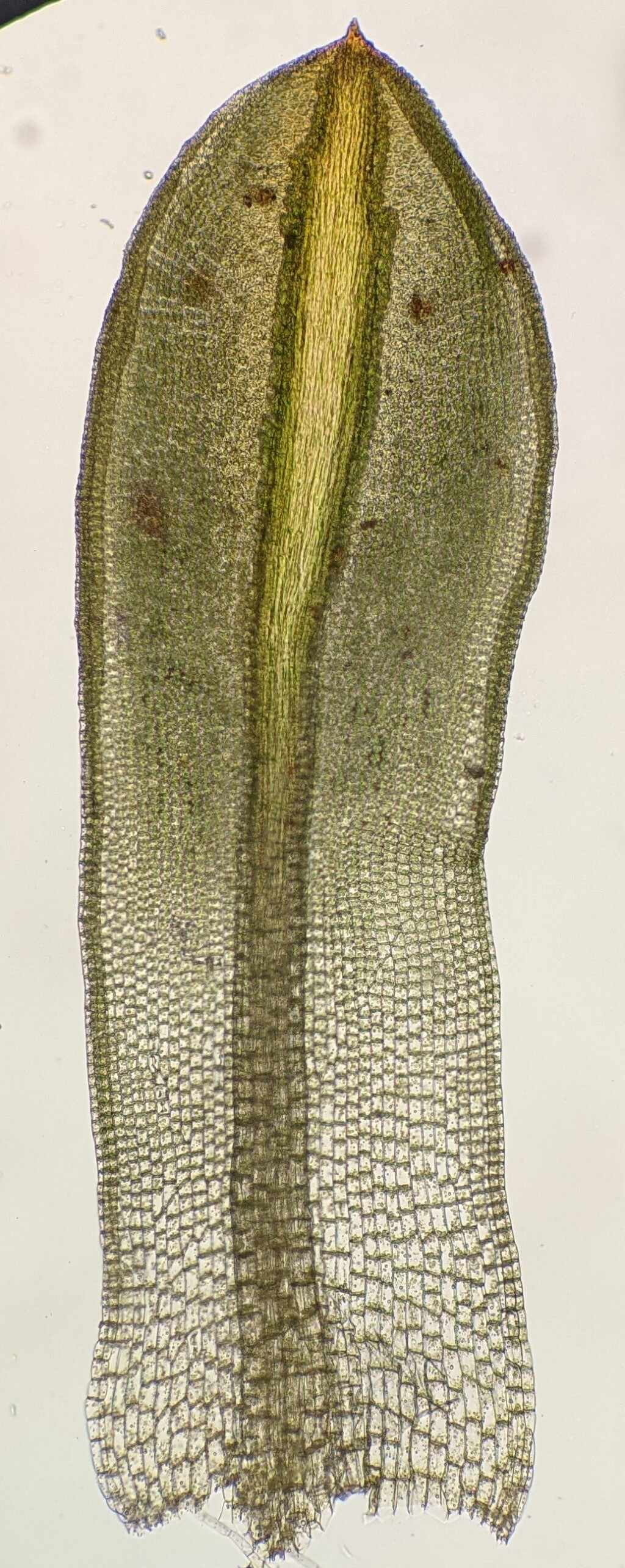Crossidium
Autoicous, goniautoicous, dioicous or polyoicous (not in Victoria). Asexual reproduction possibly by rhizoidal tubers (not in Victoria). Gregarious or turves on soil. Stem erect, often branched; central strand present or absent (not in Victoria); sclerodermis absent; hyalodermis absent. Leaves lingulate, obovate, oblong, spathulate or lanceolate, erect to erect-spreading when moist, incurved or occasionally spiralling around stem when dry; apex rounded, obtuse, apiculate or emarginate (not in Victoria), with or without a hairpoint; hairpoint smooth or rarely denticulate (not in Victoria); costa percurrent (not in Victoria) or excurrent, differentiated into a pad of photosynthetic filaments adaxially, without an adaxial stereid band, with a hydroid strand, with an abaxial stereid band, without a distinct differentiated abaxial epidermis, with elongate abaxial superficial cells; margin entire or occasionally denticulate, plane (not in Victoria) to recurved, without a border; laminal cells in apical half quadrate to rectangular, hexagonal or rhomboid, smooth to pluripapillose, with a yellow KOH reaction; basal laminal cells extending furthest close to costa, rectangular or occasionally quadrate, smooth. Acrocarpous. Capsule erect or slightly inclined, straight or slightly curved, ovoid or ellipsoid to cylindric, exserted, operculate. Calyptra cucullate, smooth, glabrous. Operculum conic or rostrate (not in Victoria). Peristome of 16 teeth cleft to near base into 32 filaments, twisted anticlockwise or sometimes straight (not in Victoria), or reduiced to a basal membrane (not in Victoria).
Fourteen species, shared between the Americas, southern Europe, northern and southern Africa, Australia and New Zealand, mostly in arid or semiarid areas (Cano et al. 1993; Zander & Hedderson 2011); two species in Victoria.
Crossidium is distinguished from the similar genus Tortula by photosynthetic filaments that are borne on the adaxial surface of the costa. Zander (1993) discussed the putative close relationship between Crossidium and Tortula, comparing the similar but less pronounced adaxial costal pads with vertically elongate cells or flask-shaped protuberant cells of some Tortula species to the filaments of Crossidium. Derivation of Crossidium from Tortula ancestry is also suggested by phylogenies of chloroplast rps4 sequences that place Crossidium species in a group among Tortula species. This suggests that Crossidium may be better included within Tortula. Recognising this degree of adaxial costa variation would not be unprecendented as species with and without costal filaments are currently recognised within Pseudocrossidium (Cano et al. 2021). Other genera such as Phascum and Pterygoneurum are also resolved among Tortula and Crossidium species in rps4 phylogenies and consequently any revision to Tortula will also need to consider these taxa. Phylogenetic reconstruction of this group of mosses is still in its infancy with few species having been sampled and only one chloroplast region having been sequenced. Until Tortula and its close relatives are further studied in more detail, and the boundaries of Tortula are better clarified, Crossidium is tentatively retained here.
 Spinning
SpinningCano, M.J.; Guerra, J.; Ros, R.M. (1993). A revision of the moss genus Crossidium (Pottiaceae) with the description of the new genus Microcrossidium. Plant Systematics and Evolution 188: 213–235.
Cano, M.J.; Jiménez, J.A.; Gallego, M.T.; Guerra, J. (2021). A molecular approach to the phylogeny of the moss genus Pseudocrossidium (Pottiaceae, Bryopsida) and its taxonomic implications . Journal of Systematics and Evolution.
Zander, R.H. (1993). Genera of the Pottiaceae: Mosses of harsh environments. Bulletin of the Buffalo Society of Natural Sciences 32: 1–378.
Zander, R.H.; Hedderson, T.A. (2011). A new species of Crossidium (Pottiaceae, Bryophyta) from South Africa. Journal of Bryology 33: 304–306.

